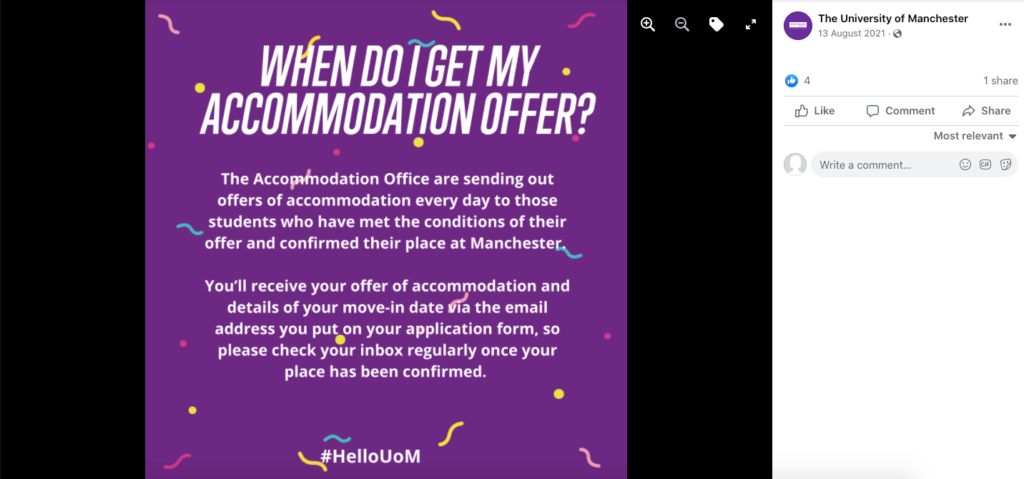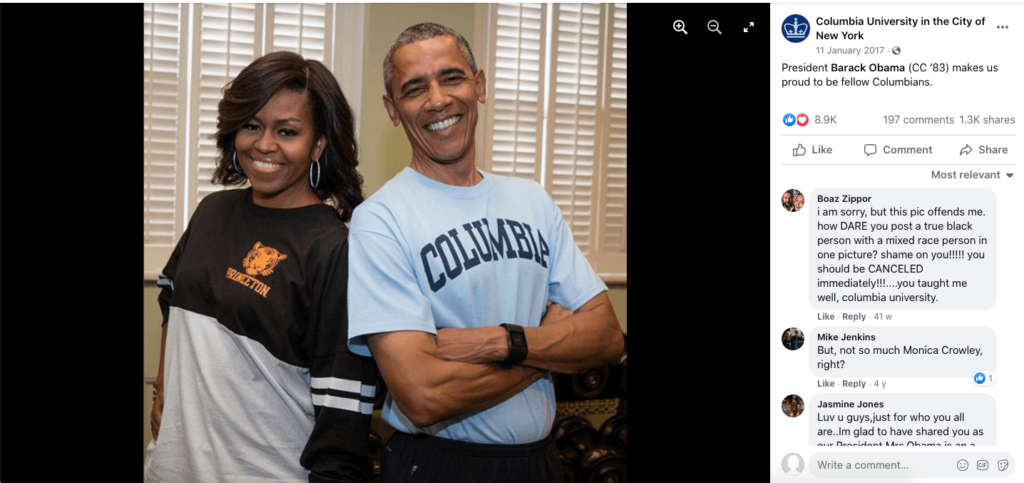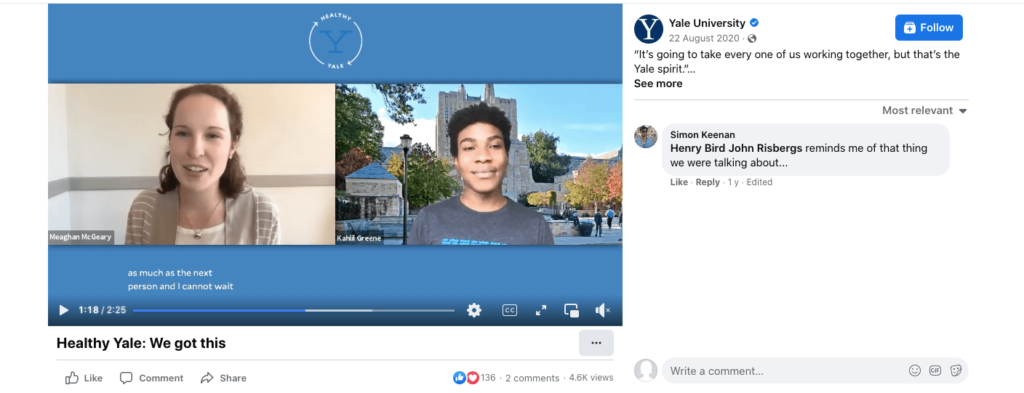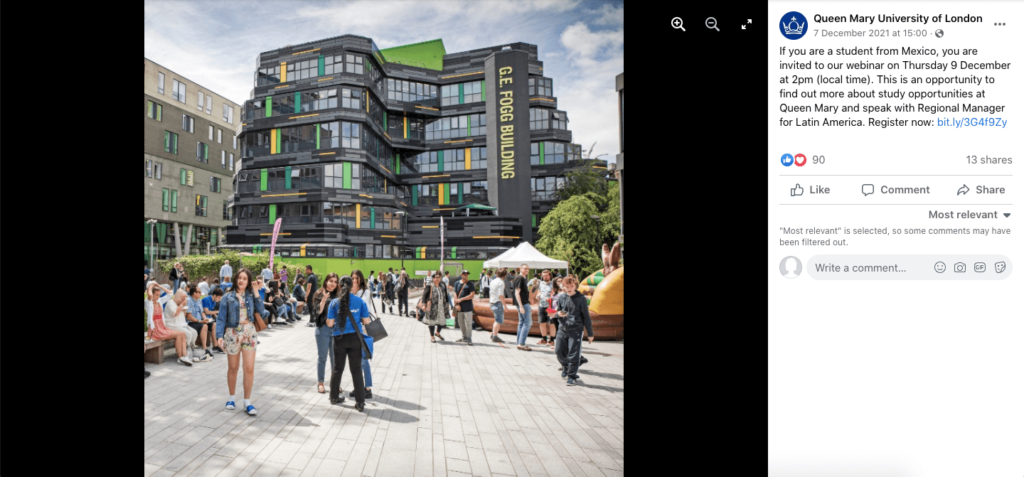Social media is part of our daily lives. It has taken over the world as a platform for sharing information, opinions, and ideas. Higher education professionals are beginning to take advantage of it as well. Using social media in higher education has been shown to be an effective means of increasing student enrollment and alumni donations. In this blog post, you will learn how to leverage social media to enhance your school’s visibility and reach.
How social media can benefit higher education
Social media is a great way to advertise your school’s offering
Use social media to spread awareness of your school’s programs and courses, as well as their benefits. You can also use it to promote campus events such as open houses, information sessions, and commencements/graduations.
Additionally, using social media in higher education allows you to share news about your school and highlight the accomplishments of your alumni in front of a wider audience. What’s more, it can be used to promote your institution and its students on a more personal level, all for the sake of making your school more appealing.
Social media can help you connect with potential students
Using social media in higher education can make a brilliant touchpoint with prospective students. They can learn about your school from organic posts, but you can precisely reach the groups you want to with targeting options worthy of a king. A school can target high school students who have expressed an interest in a certain major or program, for example.
With social media profiles, you can get to know your potential students, ask and answer their questions, as well as encourage them to interact with your school. All of this can be achieved through effective communication, a well-thought-out marketing strategy, but also through your team’s involvement.
What are the examples of using social media in higher education? For example, social media profiles can be used by college admissions counselors to reach out to potential applicants, for example, by scheduling a live video on Facebook for a virtual information session.
In the remote world, where students are no longer required to physically visit campuses to get a sense of them, running high-quality communication on social media in higher education is especially essential.
While focusing on students is important, schools should also remember to communicate with parents. A college can share blog posts discussing how to pay for college or tips for choosing the right school (as well as run targeted paid campaigns aimed at parents).
Here’s an example from the University of Manchester – they decided to answer a frequently asked question (apparently both by students and their parents) in the form of an infographic:
Social media can increase enrolment rates for your school
Using social media in higher education to reach potential students is one thing, but can it actually help drive their enrollment? It sure can.
Through social media, you can spread information about your alumni’s success in the workplace and how it relates to the degree that they received from your school.
And there are some posts that speak louder than others:
For some, it could have been a sign saying “Hey, if you want to be successful, Columbia University is the way to go”. Colleges and universities that have embraced social media have seen success, with some reporting increases in campus visits by prospective students or new alumni donations. The correct use of social media can be beneficial to your school as well.
Profiles on social media in higher education can serve as an announcement board for schools
You can use social media to post updates, share information about your school’s programs and services, plus remind people about upcoming events.
And what a relief that can be. In the past, you had to use leaflets, posters, or public address systems to communicate announcements around the campus. Now, you can save time and ensure reach with just a single click.
Social media can help you build an engaged community around your school
This is one of the greatest things not only about social media in higher education but social networks in general: you can communicate with people in both directions. This way, your school can build a community in which people can connect with one another, share ideas, and collaborate on projects.
Using social media in higher education can help you organize groups of students (or alumni) around specific interests or causes. Create a STEM community, for instance, so that students can share materials that are relevant to their field of study. In addition, you can use social media to obtain feedback from current students about your school’s services and programs to find out how to better provide for them.
Colleges and universities on social media: the first steps
#1 Set up social media accounts
You need to be present where your current and potential students are active and they use a wide array of social media platforms.
Create accounts on social media platforms like Facebook, Twitter, and LinkedIn. If it is appropriate for your institution, you may also consider creating a school account on Instagram or Snapchat. Some universities even embrace TikTok.
Once this has been accomplished, you will want to encourage students and staff to share your school’s content on these sites. This is because setting up the accounts is pretty straightforward, but creating content and engaging with your audience is much more challenging.
#2 Create a social media posting plan
Create a social media calendar that details what kinds of content you’ll post on each platform and when it should be published. Identify some communication channels and keep them open so that everyone in both your department and your audience will know when they can expect content to be posted.
Preparing a plan will help you keep your multiple social media accounts constantly updated.
Additionally, you can integrate your social media accounts together in one place using a social media management tool such as Kontentino. This will enable you to track the performance of each of your posts and schedule them in advance.
#3 Setting KPIs for profiles on social media in higher education
Many academic institutions struggle with defining the purpose of their social media existence. For many businesses, social media profiles are used only to increase sales, which does not really apply to higher education.
Could it be that there are no real goals for education on social media? Certainly not. “Increasing enrollment rates” as your chosen KPI may not be measurable, as there are many other factors contributing to this action. Set your social media KPIs and include them in your strategy.
There are other KPIs that are worth setting up, though:
- Increasing your profile engagement rates (e.g. 2% growth in Q1 of 2022)
- Engaging alumni in communication (e.g. 5% increase by Q2 2022)
- growing reach in your crucial target audience (e.g. reaching 15% more graduates from neighboring states in the following year)
Social media in higher education can and should be used for connecting students, interacting with alumni, and even encouraging donations. However, at the end of the day, attracting new students should be the ultimate objective.
#4 Select who is going to be responsible for the accounts
Of course, there should be someone in charge of managing the social media accounts at your school. The person in this position must keep posting new content on a regular basis and engaging with others. This person should also be prepared to address any questions or concerns that people may express about your school on social media. That is why an FAQ would be useful to this person.
A dedicated team of admissions, marketing, and communications professionals can create and execute a successful social media strategy. This is simply because these teams will already have a good understanding of the college’s messaging and audience.
#5 Set up a social media policy
Having a social media policy in place is important in any communication between your school and others.
What should be covered in such a social media policy?
- Who is responsible for maintaining the accounts and how often will they post new content?
- When should posts from other schools, students, and alumni be included in a social media plan?
- What kind of content should be shared on each platform and when is the best time to post it?
- Where to find particular assets, passwords, and data?
- What is the tone of voice and brand book of your institution?
- How to monitor, moderate, and flag social media activity?
- What is the process for responding when someone has a question or concern about your institution’s social media profiles?
- Are there any legal restrictions on what can be shared on social media?
- What should happen if there is a crisis or emergency and how will social media be used to communicate about it with the public?
Having a social media policy in place will ensure that your school’s social media accounts are being managed in a manner that aligns with the institution’s goals and values. Having guidelines for appropriate content to share on social media can also help avoid any embarrassing posts or situations.
It is at this point where a social media management workflow really helps. You can follow one to check all of your new posts quickly before they go live.
#6 Research others and try to emulate them with your content
There are surely other colleges and universities that are utilizing social media. View their profiles to see how they share information about their institutions on different platforms.
You can also learn from the types of content they post as well as the strategies they use to target prospective students. You can get plenty of inspiration from them even if they’re not directly competing with you. It’s going to be even more insightful if they are, though.
Kontentino lets you run a competitor analysis in order to see how your competition is doing and how you can improve your own performance.
#7 But… why so serious?
One of the adjectives that come to mind when you think of academia is probably ‘serious’. There is some truth to that, since higher education institutions should be professional with every inch of their communication.
Professional doesn’t have to mean dead serious, though.
Don’t be scared to show your human side occasionally. Perhaps not every person will find a photo of two bunnies professional, and you may not receive dozens of applications as a result (but who knows?), but at least you’ll warm up your social media a bit.
MIT, one of the most renowned academic institutions in the world, did not hesitate to share a photo of exactly that with their 360k followers:
(Don’t even try telling me they aren’t cute)
What kind of content should I post on my schools’ social media page?
College and university staff can use various types of posts to engage prospective students and alumni on social media.
Infographics
Create infographics that highlight the benefits of enrolling in your school or share interesting facts about your campus. Share these infographics on social media and repurpose them later as emails or posters in offline communication.
For example, to promote open houses or information sessions, you could post an infographic that discusses the benefits of attending (e.g. meet with professors).
Statistics
In order to highlight alumni achievements, you could share a pie chart showing how many of them became doctors and lawyers, etc. You might also want to post information about your school’s enrollment, tuition rates, or the percentage of students who receive scholarships.
Make sure you use a catchy headline when sharing statistics on social media, and include a short paragraph that explains the numbers. Additionally, to maximize the reach and impact of your infographic, share it across various social media platforms.
The University of Glasgow did just that:
Retweets and reposts
Retweeting about your school’s experience with your followers can also be an effective social media strategy for college admissions counsellors. This way, you will demonstrate that your school is involved with its community and that you are interested in what both current and former students, as well as professors, have to say.
If someone shares a tweet about your school, retweet it. You will increase the reach of their post and promote your academic institution at the same time.
This can work on other social media platforms, too.
Videos of all types
Colleges have found success using Facebook Live events by broadcasting conversations and classes in real-time on this social media platform. Why wouldn’t you follow in their footsteps?
By utilizing short live video clips, you can humanize your university’s image and add modernity. This can be also used for broadcasting classes, or at least a part of them, so that prospective students can access classrooms from around the world without having to physically contact the school.
Since it is not possible to edit material before it is aired with live formats, it can be a daunting experience for some that they may want to avoid using in their communication.
The good news is that higher education can take advantage of other video formats.
On social media, pre-recorded videos featuring the perspective of professors are particularly effective. Here’s an example from the University of Toronto:
Social media can also be used to promote video content that will be broadcast outside of the platform, such as a webinar.
Photos from the campus and its students
Include photos of campus events and student life to allow prospective and current students to get a sense of what life at the school is like. Potential applicants will get an idea about how it might feel to attend your institution.
This game is handled very well by the University of Pennsylvania, for example:
In terms of graduations and commencements, many academic institutions display them on their profiles. Even if doing so doesn’t make you stand out as much as you might think, it’s still worth adding them so people can check out your photos.
Additionally, you could post photos of current students studying or working on campus. This will help reflect the school’s atmosphere.
You can also share stories and comments from your students and alumni to build bonds and interest in studying at your university. Harvard achieves this perfectly:
User-generated content
Encouraging current students and alumni to share their experiences on social media is a great way to increase engagement. In addition to being more authentic than traditional marketing materials, user-generated content (UGC) can often facilitate more social interactions.
Many colleges, universities, and other academic institutions already use this tactic, but that doesn’t mean you can’t join them.
Here’s an example from the University of Cambridge:
If so, you ought to consider publishing guidelines so that everyone will know what kind of content you would like to see. By doing this, you will reduce the chances of anyone being disappointed if their photo didn’t make the cut.
Events
Social media offers a great platform for promoting events of all kinds. That means not only online summits and conferences, but also in-person classes and meetings. By using this approach, you can provide omnichannel promotion for all of the initiatives that occur around your campus, regardless of the form they take.
Content repurposing for social media in higher education
Content creation can be a challenge for higher education institutions, but not if they embrace content recycling. In some cases, the materials they include in their emails, leaflets, or posters can also be used in social media posts. This will help ensure consistency of their communication, too.
If you review some old brochures that you printed and distributed in the past, you might find some statistics, interesting facts, or quotes that you can incorporate into your social media communication.
Utilize social media fully by saving your Instagram content to Highlights to make your old Stories always easily accessible to find, for example. MIT students do this really well:
MIT Student Life is not the university’s official Instagram account, but it is a closely related one. Be sure to take a look at how all the MIT accounts connect, as they are great benchmarks.
Social media for higher education may be tricky…
but it is absolutely worth taking the risk, as long as you take care of your everyday presence there.
As you can see, social media in higher education can be used in various ways to help promote your institution. You can engage prospective students and alumni on social media using infographics, statistics, retweets, and photos. Aside from that, posting about events and the campus itself will give people a better sense of what the spirit of your academic institution is like. Make sure to use all of these tactics when promoting your school on social media.













